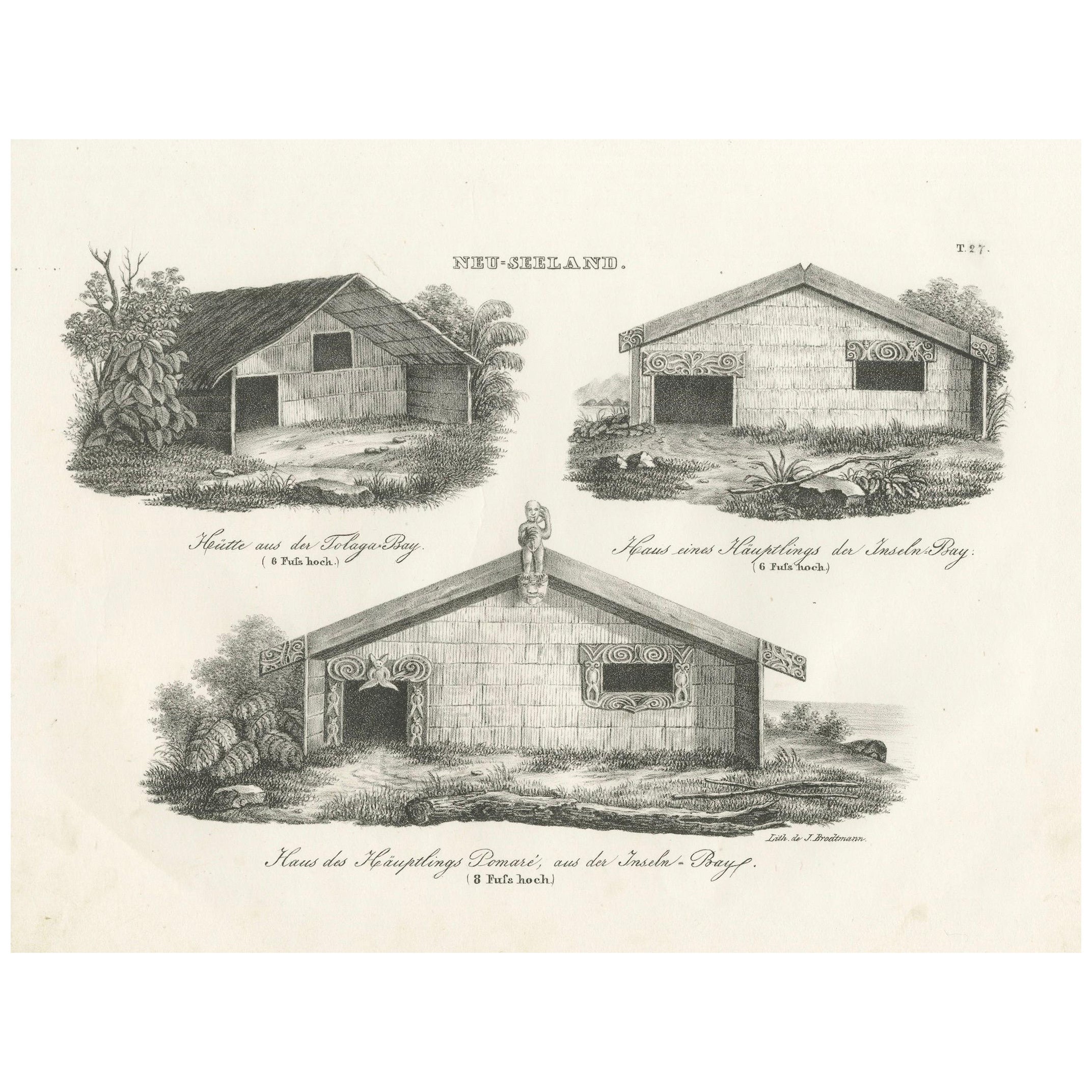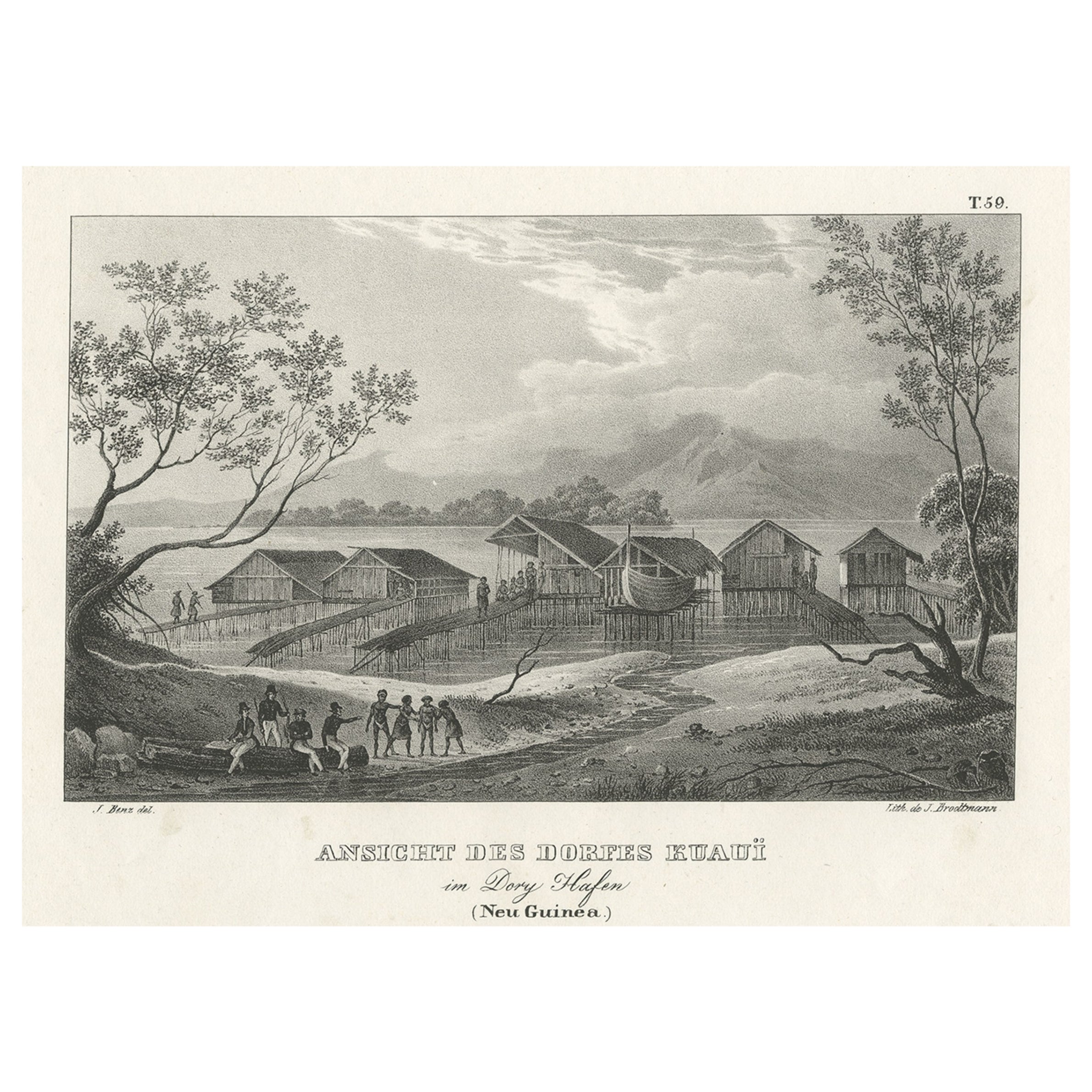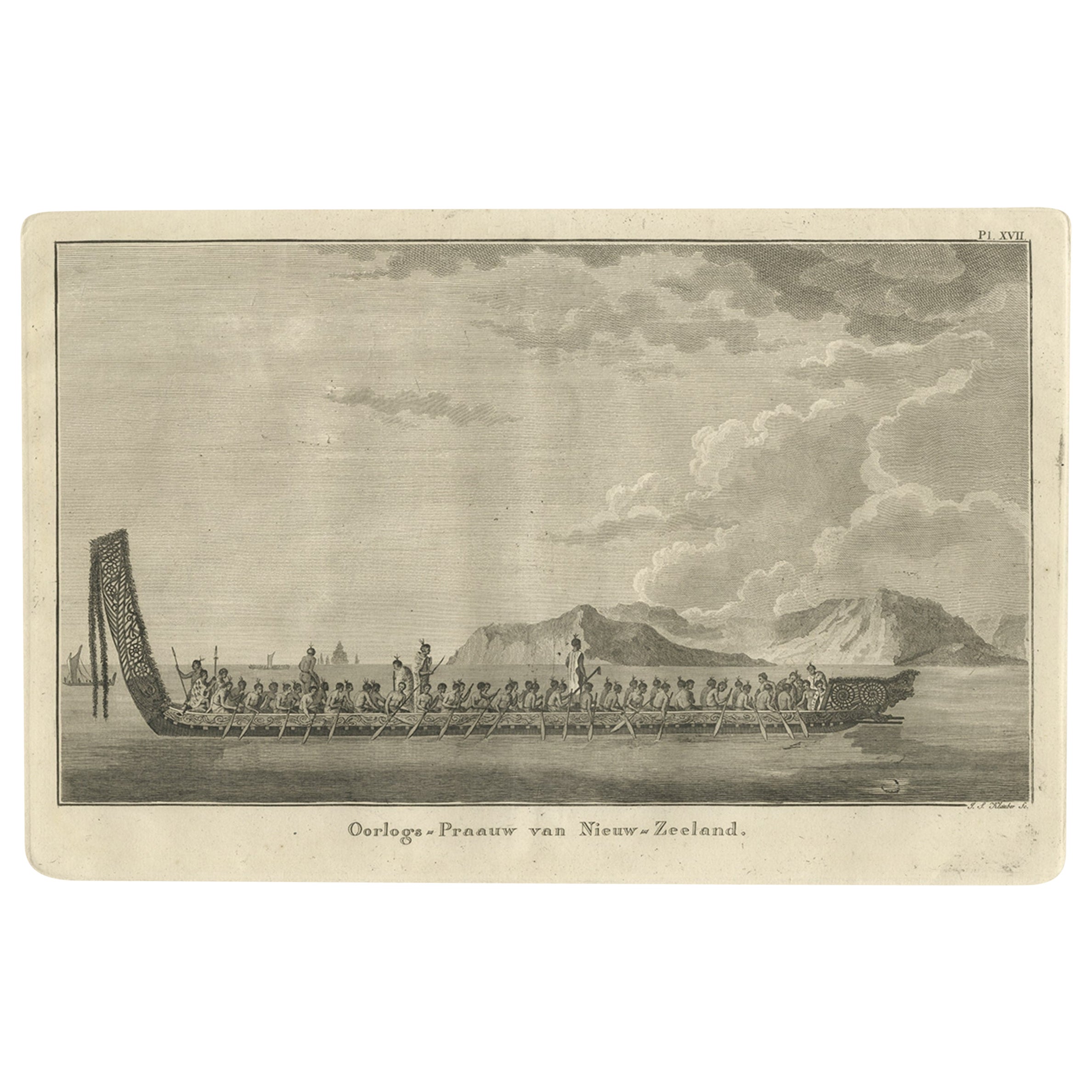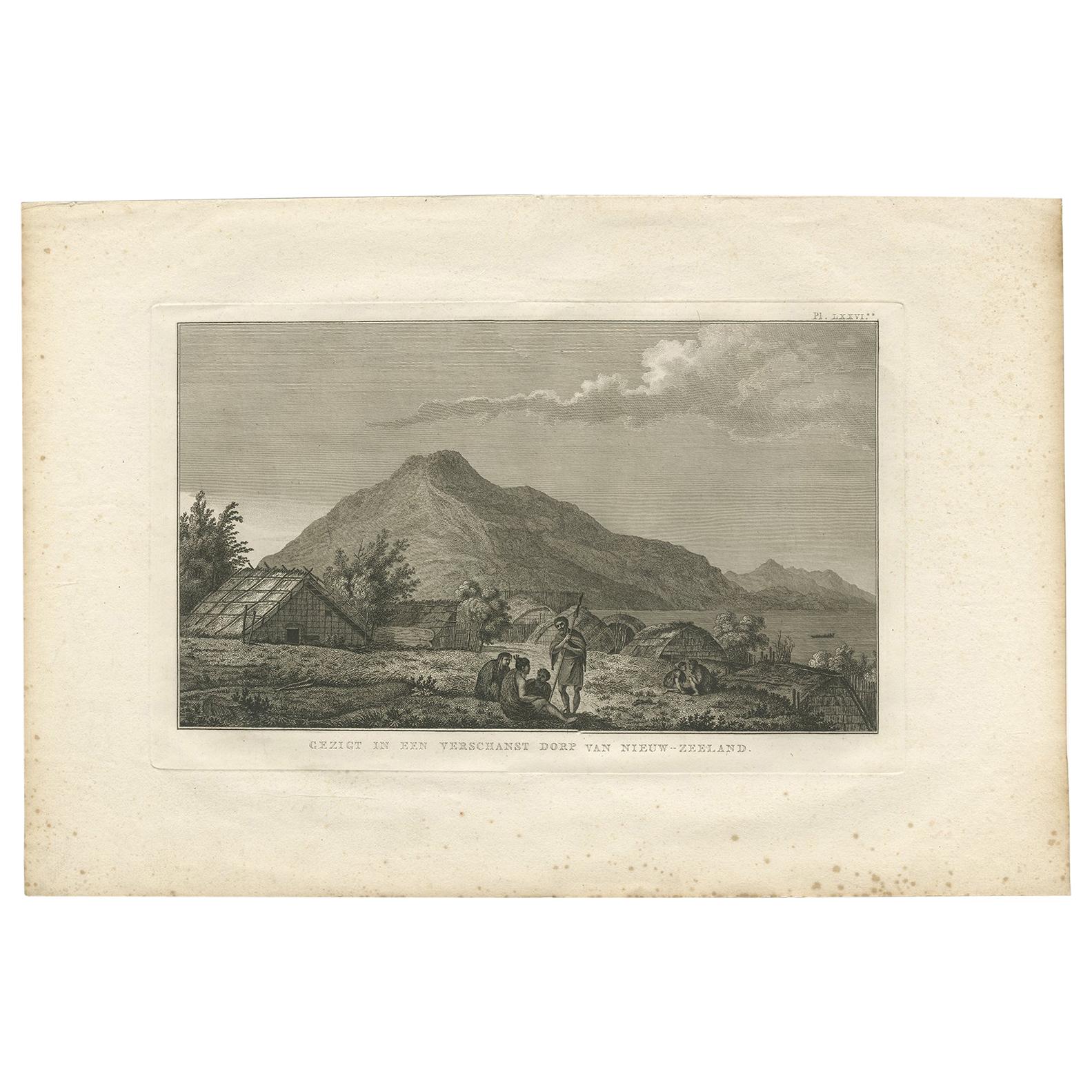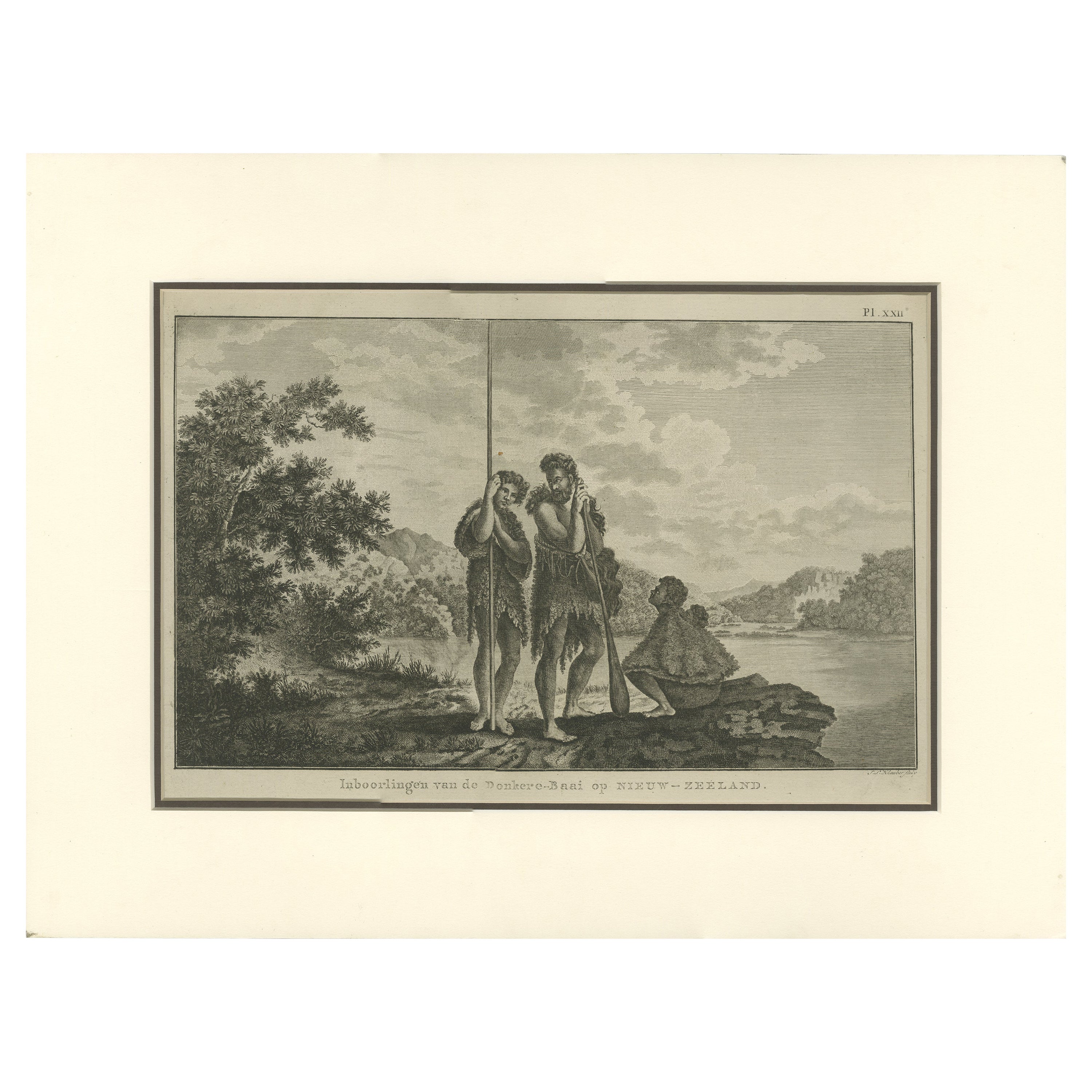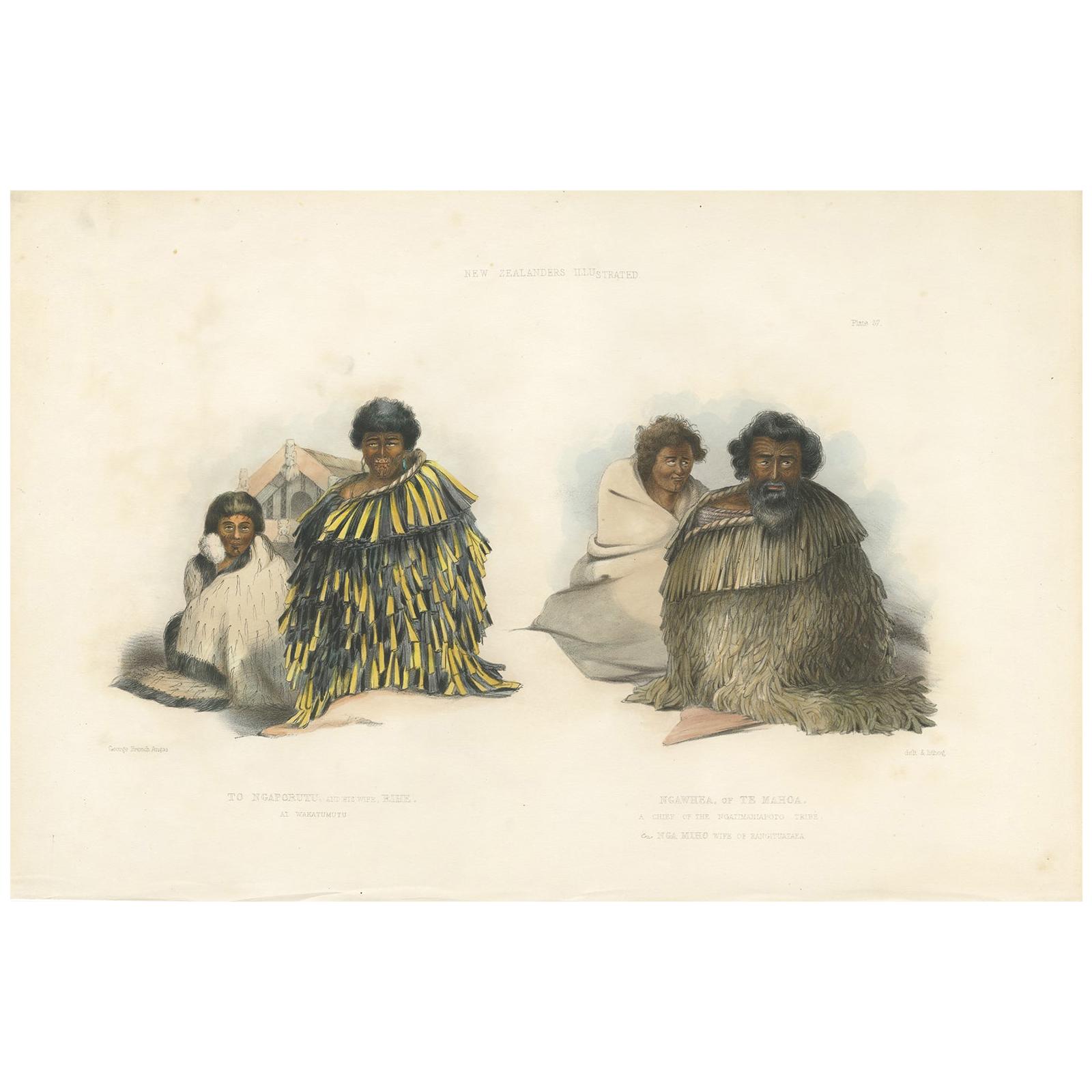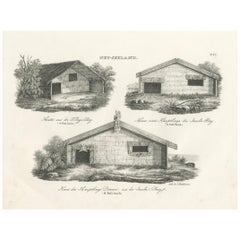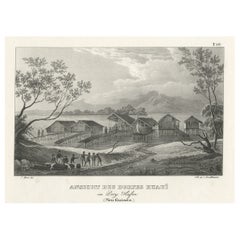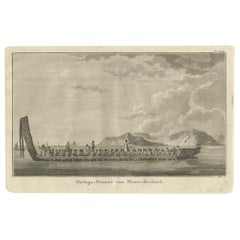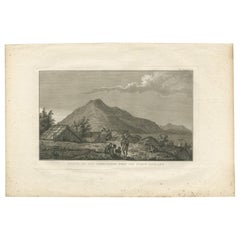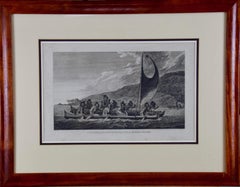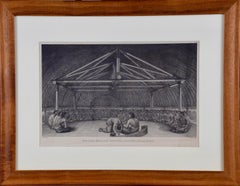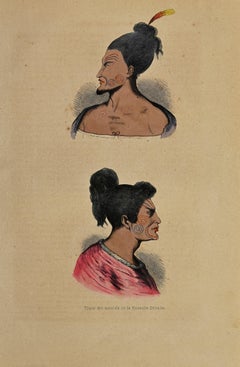Items Similar to Engraving of a Maori Village Scene at Astrolabe Bay, New Zealand, ca.1836
Want more images or videos?
Request additional images or videos from the seller
1 of 7
Engraving of a Maori Village Scene at Astrolabe Bay, New Zealand, ca.1836
$168.14
£123.83
€140
CA$228.74
A$254.18
CHF 133.19
MX$3,117.05
NOK 1,698.79
SEK 1,598.16
DKK 1,065.80
Shipping
Retrieving quote...The 1stDibs Promise:
Authenticity Guarantee,
Money-Back Guarantee,
24-Hour Cancellation
About the Item
Title: Village Scene at Astrolabe Bay, New Zealand
Description: This finely detailed engraving captures a serene scene of a Maori village located along the shores of Astrolabe Bay in New Zealand. The image depicts Maori villagers engaged in daily activities, such as launching and hauling their intricately carved canoes (waka) onto the shore. Thatched-roof huts are scattered across the landscape, blending seamlessly with the lush vegetation of the surrounding hills. A carved gateway, a symbol of cultural artistry, marks the entrance to the village, adding a sense of structure and tradition to the scene.
In the background, tranquil waters extend towards distant islands and snow-capped mountains, offering a glimpse into the natural beauty of the region. The composition emphasizes the strong connection between the Maori people and their environment, reflecting their maritime heritage and resourceful way of life.
This engraving, likely produced as part of Dumont d'Urville's exploratory records, provides valuable insight into Maori culture and their interactions with the land and sea during the early 19th century.
Condition Report: Except for the borders, good condition. Light foxing present along the margins with minor corner wear. A few tears but not reaching the image. The central image remains clean and well-preserved, with sharp details intact.
Keywords: Astrolabe Bay, Maori village, waka canoes, New Zealand, Maori culture, indigenous life, maritime heritage, traditional architecture, Dumont d'Urville, 19th-century exploration.
- Dimensions:Height: 9.93 in (25.2 cm)Width: 13.47 in (34.2 cm)Depth: 0.01 in (0.2 mm)
- Materials and Techniques:
- Period:
- Date of Manufacture:circa 1836
- Condition:Except for the borders, good condition. Light foxing present along the margins with minor corner wear. A few tears in the left border, but not reaching the image. The central image remains clean and well-preserved, with sharp details intact.
- Seller Location:Langweer, NL
- Reference Number:Seller: BG-14025-321stDibs: LU3054343029012
About the Seller
5.0
Recognized Seller
These prestigious sellers are industry leaders and represent the highest echelon for item quality and design.
Platinum Seller
Premium sellers with a 4.7+ rating and 24-hour response times
Established in 2009
1stDibs seller since 2017
2,494 sales on 1stDibs
Typical response time: 1 hour
- ShippingRetrieving quote...Shipping from: Langweer, Netherlands
- Return Policy
Authenticity Guarantee
In the unlikely event there’s an issue with an item’s authenticity, contact us within 1 year for a full refund. DetailsMoney-Back Guarantee
If your item is not as described, is damaged in transit, or does not arrive, contact us within 7 days for a full refund. Details24-Hour Cancellation
You have a 24-hour grace period in which to reconsider your purchase, with no questions asked.Vetted Professional Sellers
Our world-class sellers must adhere to strict standards for service and quality, maintaining the integrity of our listings.Price-Match Guarantee
If you find that a seller listed the same item for a lower price elsewhere, we’ll match it.Trusted Global Delivery
Our best-in-class carrier network provides specialized shipping options worldwide, including custom delivery.More From This Seller
View AllEngraving of Maori Dwellings from Tolaga Bay and the Inseln-Bay, 1836
Located in Langweer, NL
Title: Maori Dwellings from Tolaga Bay and the Inseln-Bay
Description: This engraving presents three traditional Maori dwellings, each showcasing distinctive architectural element...
Category
Antique 1830s Prints
Materials
Paper
Original Lithograph with a Scene of a Village and Harbour in New Guinea, c.1836
Located in Langweer, NL
Antique print titled 'Ansicht des Dorfes Kuauï'. Im Dory Hafen.
Old print with a scene of a village and harbour in New Guinea. This print originates from 'Entdeckungs, Reise der Franzosischen Corvette Astrolabe Unternomen auf Befehl Konig Karls...
Category
Antique 1830s Prints
Materials
Paper
$345 Sale Price
20% Off
Original Copper Engraving of a Maori War Canoe, New Zealand, 1803
Located in Langweer, NL
Antique print New Zealand titled 'Oorlogs-Praauw van Nieuw-Zeeland'.
View of a Maori war canoe, New Zealand. Originates from 'Reizen Rondom...
Category
Antique Early 1800s Prints
Materials
Paper
$422 Sale Price
20% Off
Antique Print of a Village in New Zealand by Cook, 1803
Located in Langweer, NL
Antique print titled 'Gezigt in een verschanst dorp van Nieuw-Zeeland'. This print depicts a village in New Zealand. Originates from 'Reizen rondom de Waereld' by J. Cook. Translated...
Category
Antique Early 19th Century Dutch Prints
Materials
Paper
$278 Sale Price
20% Off
Antique Print of a Maori Family by Cook '1803'
Located in Langweer, NL
Antique print titled 'Inboorlingen van de Donkere-Baai op Nieuw-Zeeland'. This print depicts a Maori family, New Zealand. Originates from 'Reizen rondom de Waereld' by J. Cook. Trans...
Category
Antique Early 19th Century Prints
Materials
Paper
$336 Sale Price
20% Off
Original Old Print of To Ngaporutu and Ngawhea of Te Mahoa, New Zealand, 1847
Located in Langweer, NL
Antique print titled 'To Ngaporutu - Ngawhea, of the Mahoa'. Lithograph of To Ngaporutu and his wife Rihe at Wakatumutu; Ngawhea of Te Mahoa, a chief of the Ngatimaniapoto tribe and ...
Category
Antique Mid-19th Century Prints
Materials
Paper
You May Also Like
Family in Dusky Bay, New Zealand: Original 18th C. Engraving from Captain Cook
By William Hodges
Located in Alamo, CA
"A Family in Dusk Bay, New Zealand" is an original 18th century engraving from a drawing by William Hodges (1744-1797), who was the artist who accompanies Captain Cook on his second ...
Category
1780s Landscape Prints
Materials
Engraving
Sandwich Islands Canoe (Hawaii): Framed 18th C. Engraving Captain Cook's Journal
By John Webber
Located in Alamo, CA
"A Canoe of the Sandwich Islands, the Rowers Masked" is an engraving created by Charles Grignion, from a drawing by John Webber (1752-1793), who was the artist on Captain James Cook's 3rd and final voyage of discovery. It is Plate 65 in the atlas of "A Voyage to the Pacific Ocean Undertaken by the Command of His Majesty, for Making Discoveries in the Northern Hemisphere", the official British Admiralty sanctioned journal published upon completion of the voyage in London in 1784 by Strahan & Cadell.
This famous image of ten Hawaiian rowers transporting a priest who is carrying a feather-covered image of Kukailimoku, the Hawaiian god of war. The priests and paddlers are all wearing gourd masks in their double-hulled canoe with an upright lateen woven sail. Each hull was shaped from a single large Koa log harvested from island rainforests, where they were carved before being transported to the coast.
This engraving is presented in a Koa wood frame and a white mat. There are occasional faint spots, but the print is otherwise in very good condition. Koa is the same wood as was used to make the canoe. Koa wood is legendary in Hawaii. Not only is this amazing wood native to Hawaii, but it is known for the deep rich colors and varied grain pattern. Koa has an honored heritage in Hawaii and is highly revered and sacred. The word “koa” means “warrior” in Hawaiian. The warriors of King Kamehameha the Great, created canoes and weapons from a wood plentiful on the Big Island of Hawaii. This wood became synonymous with the warriors themselves, and it became known as koa. The frame measures 20.75" high, 26.75" wide and 0.88" deep.
There are three other engravings listed from the official journal of Captain Cook's 3rd voyage available that are presented in identical Koa wood frames and mat (LU117324682022, LU117324684052, LU117324684062). They would make a wonderful grouping for a display of 2, 3 or 4 prints. A discount is available for a grouping depending on the number of items included.
Hawaii was discovered by Captain Cook (1728-1779) during this voyage. Hawaii was originally called The Sandwich Islands in honor of The Earl of Sandwich...
Category
1780s Landscape Prints
Materials
Engraving
"King of the Friendly Islands" (Tonga); Engraving from Captain Cook's 3rd Voyage
By John Webber
Located in Alamo, CA
"Poulaho, King of the Friendly Islands, Drinking Kava" is an engraving created by William Sharp (1749-1824), from a drawing by John Webber (1752-1793), who was the artist on Captain James Cook's 3rd and final voyage of discovery. It was published in the atlas of "A Voyage to the Pacific Ocean Undertaken by the Command of His Majesty, for Making Discoveries in the Northern Hemisphere", the official British Admirality sanctioned journal published upon completion of the voyage in London in 1784 by Strahan & Cadell.
Captain Cook visited Tonga on his 3rd voyage, which he named The Friendly Islands because of the warm welcome he and his crew received, unlike some of the other more hostile Pacific islands. The engraving depicts Cook and his men observed a kava ceremony at the village of Mu’a on Tongatapu. King Paulaho sits in the centre foreground, his back to the spectator with a man kneeling before him. The ceremonial mat depicted behind Paulaho indicates that nobody was allowed to sit behind him. The figure in the centre holds a single cup, referring to the Tongan custom of offering the cup to the king first. Kava is native to the islands of the South Pacific and was first described for English readers in 1768 by Captain James Cook. The kava root has been used for centuries as a central feature of ceremonies and celebrations because it was able to bring about a calming and pleasant social atmosphere. The root was crushed and processed into coconut milk to become the focal ceremonial beverage, simply referred to as kava.
This engraving is presented in a Koa wood frame and a white mat. Koa wood is legendary in Hawaii. There are occasional faint spots, but the print is otherwise in very good condition. This amazing Koa wood is native to Hawaii and it is known for the deep rich colors and varied grain pattern. Koa has an honored heritage in Hawaii and is highly revered and sacred. The word “koa” means “warrior” in Hawaiian. The warriors of King Kamehameha the Great, created canoes and weapons from a wood plentiful on the Big Island of Hawaii. This wood became synonymous with the warriors themselves, and it became known as koa.
There are three other engravings listed from the official journal of Captain Cook's 3rd voyage available that are presented in identical Koa wood frames and mats (LU117324682422, LU117324684052, LU117324684032). They would make a wonderful grouping for a display of 2, 3 or 4 prints. A discount is available for a grouping depending on the number of items included.
Captain Cook is remembered as one of the greatest explorers and navigators in history. His explorations included Australia, New Zealand and islands of the South Pacific and the northwest coast of North America. Hawaii was discovered by Captain Cook during this voyage. Hawaii was originally called The Sandwich Islands in honor of The Earl of Sandwich...
Category
1780s Realist Figurative Prints
Materials
Engraving
New Zealand Inhabitants - Lithograph by Auguste Wahlen - 1844
Located in Roma, IT
New Zealand Inhabitants is a hand colored lithograph realized by Auguste Wahlen in 1844.
Good conditions.
The artwork belongsto the Suite Moeurs, usages et costumes de tous les peu...
Category
1840s Modern Figurative Prints
Materials
Lithograph
Original Antique Ethnographical Print, Figures, New South Wales, Australia, 1809
Located in St Annes, Lancashire
Wonderful ethnographical print.
A copper-plate engraving after Lesieur
Published by Sherwood, Neely & Jones. Dated 1809
Unframed.
Category
Antique Early 1800s English Folk Art Prints
Materials
Paper
An Inland View; in Atooi ( Hawaii ) 1784 Captain Cook engraving by John Webber
By John Webber
Located in Paonia, CO
An Inland View in Atooi ( Hawaii ) is from the 1784 First Edition Atlas Accompanying Capt. James Cook and King; Third and Final Voyage of Captain James Cook. This engraving depicts ...
Category
1780s Realist Landscape Prints
Materials
Engraving
More Ways To Browse
Chinese Kite
Chinese Wood Mask
Chrysanthemum Stone
Congo Table
Connecticut Chest
Crane Mirror
Curtis Jere Leaves
Dancing Faun Sculpture
Delft Porcelain
Delft Tobacco
Dragon Charger
Edward Wormley Drexel Precedent
Eiffel Table
Elephant Ivory Tusk
Enamel Ducks
Engine Turned Silver Frame
English Brass Longcase Clock
English Mahogany Campaign Chest
